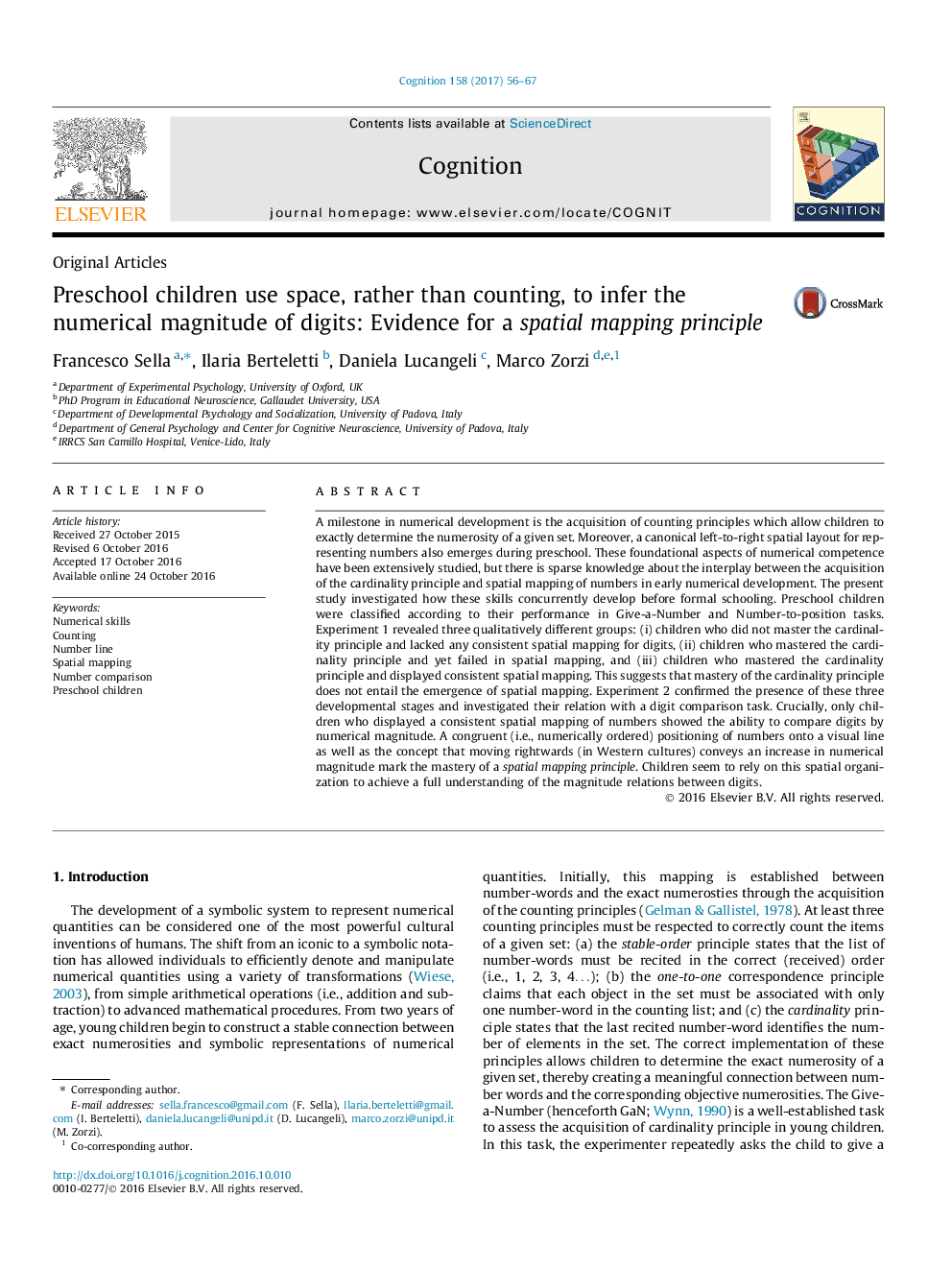| کد مقاله | کد نشریه | سال انتشار | مقاله انگلیسی | نسخه تمام متن |
|---|---|---|---|---|
| 5041681 | 1474109 | 2017 | 12 صفحه PDF | دانلود رایگان |
- Counting and spatial mapping of numbers are foundational numerical skills.
- Cardinal principle knowledge precedes but does not entail consistent spatial mapping.
- The ability to compare digits by magnitude was linked to spatial mapping but not to cardinal knowledge.
- The “spatial mapping principle” might be a key to understanding magnitude relationships.
A milestone in numerical development is the acquisition of counting principles which allow children to exactly determine the numerosity of a given set. Moreover, a canonical left-to-right spatial layout for representing numbers also emerges during preschool. These foundational aspects of numerical competence have been extensively studied, but there is sparse knowledge about the interplay between the acquisition of the cardinality principle and spatial mapping of numbers in early numerical development. The present study investigated how these skills concurrently develop before formal schooling. Preschool children were classified according to their performance in Give-a-Number and Number-to-position tasks. Experiment 1 revealed three qualitatively different groups: (i) children who did not master the cardinality principle and lacked any consistent spatial mapping for digits, (ii) children who mastered the cardinality principle and yet failed in spatial mapping, and (iii) children who mastered the cardinality principle and displayed consistent spatial mapping. This suggests that mastery of the cardinality principle does not entail the emergence of spatial mapping. Experiment 2 confirmed the presence of these three developmental stages and investigated their relation with a digit comparison task. Crucially, only children who displayed a consistent spatial mapping of numbers showed the ability to compare digits by numerical magnitude. A congruent (i.e., numerically ordered) positioning of numbers onto a visual line as well as the concept that moving rightwards (in Western cultures) conveys an increase in numerical magnitude mark the mastery of a spatial mapping principle. Children seem to rely on this spatial organization to achieve a full understanding of the magnitude relations between digits.
146
Journal: Cognition - Volume 158, January 2017, Pages 56-67
